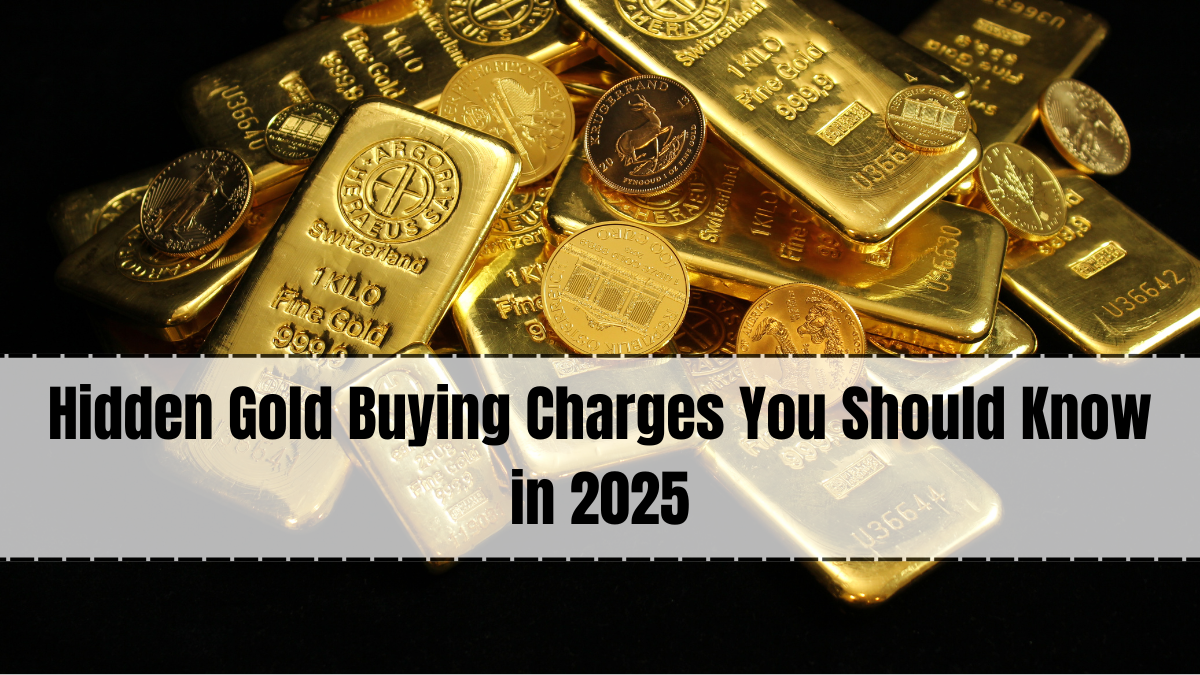Gold remains one of the most trusted and popular investment choices in 2025, valued for its ability to safeguard wealth and provide a hedge against inflation. However, while most buyers focus on the market price of gold when making a purchase, many overlook the additional costs involved—charges that can significantly affect the actual value of their investment. These hidden gold buying charges can eat into profits when it’s time to sell, and in some cases, they can make the difference between a good deal and an expensive mistake.
Whether you’re buying gold jewelry for personal use, gold coins for investment, or digital gold for convenience, understanding the various fees and costs is essential. These charges are not always clearly communicated by sellers, and first-time buyers are often surprised when they realize the true cost of their purchase.
The key to smart gold buying is knowing what charges to expect, how they are calculated, and how to minimize them. In 2025, as demand for gold continues to rise, so does the importance of being a well-informed buyer.

Making Charges
One of the most significant hidden costs in gold jewelry purchases is making charges—the cost of crafting the jewelry. Making charges are usually calculated as a percentage of the gold price or as a fixed amount per gram.
For example, a jeweler might charge 10% to 20% of the gold price as making charges for a simple chain, while an intricately designed piece could have making charges exceeding 25% or more. These charges cover labor, design work, and manufacturing, but they do not add to the resale value. When you sell the jewelry later, buyers typically pay only for the gold content, not the craftsmanship, which means you do not recover the making charges.
Wastage Charges
Wastage charges refer to the small amounts of gold lost during the crafting process—such as when gold is cut, melted, or shaped. While these losses are often minimal in reality, some jewelers inflate wastage charges to increase their profit margins. Wastage is usually charged as a percentage of the gold weight, and for certain designs, it can range from 3% to as high as 15%.
For buyers, wastage charges increase the total price without adding any tangible benefit. Always ask the jeweler about wastage rates before making a purchase, and try to choose designs with lower wastage.
Certification and Hallmarking Fees
In 2025, hallmarking of gold is mandatory in many countries, including India, to ensure purity. While hallmarking is a good thing for buyers, it does come with a small certification fee. Some sellers include this fee in the overall price, while others list it separately. Although this charge is relatively small compared to other fees, it is still worth noting, especially if you are buying in bulk.
Certification is especially important when buying gold coins or bars from private mints. Reputable sellers provide an authenticity certificate, but this may come at an extra cost.
Packaging and Handling Fees
When buying gold coins or bars, sellers often charge for special packaging to protect the product and maintain its resale value. While packaging is important for storage and presentation, these charges can sometimes be higher than necessary. Similarly, handling fees may be added to cover storage, transport, and administrative costs, especially for high-value purchases.
If you’re purchasing gold purely as an investment and plan to store it securely, you can often request simpler packaging to avoid unnecessary costs.
Buyback and Exchange Deductions
Another hidden cost comes into play when you decide to sell or exchange your gold. Many jewelers and dealers do not buy back gold at the full market price—they may deduct 1% to 3% of the value as buyback charges. In the case of jewelry, they may also deduct making charges and only pay for the net gold content.
If you plan to exchange jewelry for a new piece, wastage and making charges for the new item will still apply, meaning you lose value both ways. Always check a seller’s buyback policy before purchasing, especially if you’re buying from a local or lesser-known dealer.
GST and Taxes
In countries like India, buying gold also attracts Goods and Services Tax (GST) or similar taxes. In 2025, GST on gold purchases is 3% of the total value, and this applies to both jewelry and gold coins. While taxes are not technically hidden, many first-time buyers forget to factor them into the total cost, which can lead to surprise at the billing counter.
How to Minimize Hidden Gold Buying Charges
-
Compare making charges across different sellers before buying.
-
Opt for simpler designs with lower wastage if your goal is investment rather than fashion.
-
Buy from reputable sellers who disclose all charges upfront.
-
Understand the buyback policy before purchasing.
-
Consider gold coins or bars for investment, as they typically have lower making charges than jewelry.
-
Look for festive offers when making charges or wastage fees are waived or reduced.
Real-World Example
Suppose you buy a 20-gram gold necklace at ₹6,000 per gram in 2025. The base gold cost is ₹1,20,000. If the jeweler charges 15% making charges (₹18,000), 5% wastage charges (₹6,000), and 3% GST (₹4,140), your total bill becomes ₹1,48,140. In this case, you have paid ₹28,140 in charges alone—nearly 19% more than the actual gold value. When you resell, you are likely to recover only the base gold value, meaning the extra costs are essentially lost.
The Bottom Line
Hidden charges in gold buying are not always obvious, but they have a direct impact on the investment value of your purchase. By understanding these costs and taking steps to minimize them, you can ensure that your gold investments are more profitable in the long run.
FAQs
What are the most common hidden charges in gold buying?
Making charges, wastage charges, packaging fees, certification costs, and buyback deductions are the most common.
Do making charges add to the resale value of gold?
No, making charges cover craftsmanship and are not recovered when you sell.
How can I avoid high wastage charges?
Choose simpler designs or gold coins/bars with minimal wastage rates.
Are GST and taxes considered hidden charges?
No, they are official charges, but many buyers forget to include them in their budget.
Is it better to buy gold for investment in coin or bar form?
Yes, coins and bars generally have lower making charges and wastage compared to jewelry.
Click here to know more.
